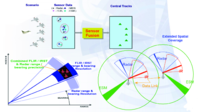
Photo from wikipedia
Recently, a great interest has been dedicated to improving data fusion techniques for indoor occupancy detection. Indoor occupancy detection is extensively used in various applications, such as energy consumption control,… Click to show full abstract
Recently, a great interest has been dedicated to improving data fusion techniques for indoor occupancy detection. Indoor occupancy detection is extensively used in various applications, such as energy consumption control, surveillance systems, and disaster management. Using environmental sensors to collect data for detecting the occupancy state has the benefit of maintaining privacy. Also, it helps in improving monitoring systems and saving money due to energy consumption control. Nevertheless, sensor data is usually incomplete and noisy, which makes it uncertain and unreliable. These problems affect the detection accuracy. This paper proposes a comprehensive occupancy detection system that depends on a new fusion technique for fusing heterogeneous sensor data, which highly improves occupancy detection efficiency. Using Neutrosophy, the proposed technique handles sensor data uncertainty. Additionally, it improves reliability by fusing multiple sensors data. As it uses only one feature generated from fusing multiple sensors data, training and testing time is reduced. Consequently, the experimental results of applying the proposed fusion technique on a public benchmark dataset exhibit a significant enhancement in binary occupancy detection accuracy. The proposed technique enhanced the worst-case accuracy from 75.1 to 81.3%, 84.7 to 90.7%, 72 to 84.2%, 73.58 to 85.1%, and 65.9 to 78% using Linear Discriminant Analysis (LDA), K-Nearest Neighbors (K-NN), Naive Bayes (NB), Support Vector Machine (SVM), and Random Forest (RF) classifiers, respectively. Using the other six performance metrics, the proposed technique results also outperform some state-of-the-art techniques.
Journal Title: IEEE Access
Year Published: 2022
Link to full text (if available)
Share on Social Media: Sign Up to like & get
recommendations!